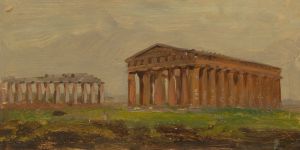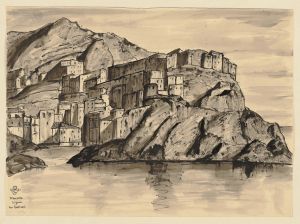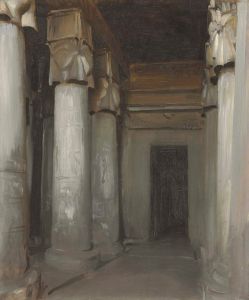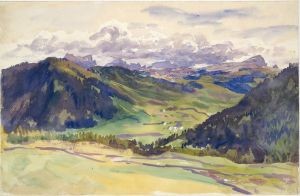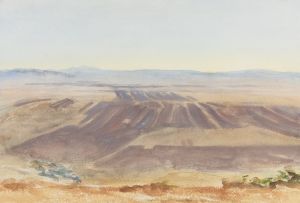
Cliffs at Deir el Bahri, Egypt
A hand-painted replica of John Singer Sargent’s masterpiece Cliffs at Deir el Bahri, Egypt, meticulously crafted by professional artists to capture the true essence of the original. Each piece is created with museum-quality canvas and rare mineral pigments, carefully painted by experienced artists with delicate brushstrokes and rich, layered colors to perfectly recreate the texture of the original artwork. Unlike machine-printed reproductions, this hand-painted version brings the painting to life, infused with the artist’s emotions and skill in every stroke. Whether for personal collection or home decoration, it instantly elevates the artistic atmosphere of any space.
John Singer Sargent's Cliffs at Deir el Bahri, Egypt is a watercolor painting created during the artist's travels in Egypt in the late 19th or early 20th century. Sargent, an American expatriate painter renowned for his portraiture and mastery of various mediums, was also an avid traveler who often captured the landscapes and architecture of the places he visited. This particular work reflects his interest in the dramatic natural and historical settings of Egypt.
Deir el-Bahri is a complex of mortuary temples and tombs located on the west bank of the Nile River, near Luxor. It is most famously associated with the Temple of Hatshepsut, an ancient Egyptian queen who ruled as pharaoh during the 18th Dynasty. The cliffs surrounding the site are striking in their scale and geological formations, providing a dramatic backdrop to the ancient structures. Sargent's painting focuses on these cliffs, emphasizing their rugged texture and interplay of light and shadow.
The watercolor medium allowed Sargent to capture the atmospheric qualities of the scene, including the intense sunlight and the subtle variations in the earthy tones of the cliffs. His use of loose, fluid brushstrokes conveys a sense of immediacy and spontaneity, characteristic of his plein air studies. The painting does not include detailed depictions of the temples or other architectural elements, suggesting that Sargent's primary interest in this work was the natural landscape rather than the archaeological features of the site.
Sargent's travels in Egypt were part of a broader journey through the Middle East and North Africa, which he undertook between 1890 and 1910. During these trips, he produced numerous watercolors and sketches that documented the landscapes, people, and cultures he encountered. These works were often created for his personal enjoyment and as studies for larger compositions, rather than for public exhibition.
Cliffs at Deir el Bahri, Egypt is one of many examples of Sargent's ability to capture the essence of a place through his keen observation and technical skill. Today, the painting is appreciated as part of his broader body of work, which includes not only portraits but also landscapes, architectural studies, and genre scenes. The exact location of this painting, whether in a museum or private collection, is not specified in available records.





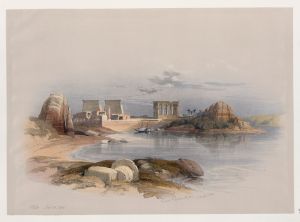
![Temple of Wady Kardassy [Qirtâsî] in Nubia.](/imgs/217550/s/david-roberts-temple-of-wady-kardassy-qirtasi-in-nubia-d2cce283.jpg)
